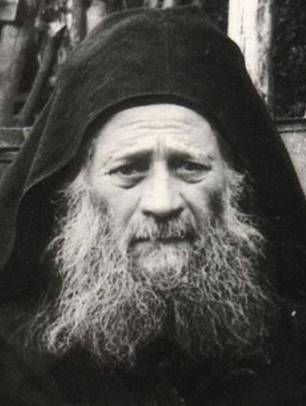Related Research Articles

Kosmas the Aetolian, sometimes Cosmas the Aetolian or Patrokosmas "Father Kosmas", was a monk in the Greek Orthodox Church. He is recognized as one of the originators of the twentieth-century religious movements in Greece. He is also noted for his prophesies. Kosmas held negative views on speakers of Aromanian and Arvanitika, and urged them to abandon their language and adopt Greek.

September 13 - Eastern Orthodox liturgical calendar - September 15

May 3 - Eastern Orthodox Church calendar - May 5

July 2 - Eastern Orthodox Church calendar - July 4

July 10 - Eastern Orthodox Church calendar - July 12

August 1 - Eastern Orthodox liturgical calendar - August 3

August 15 - Eastern Orthodox liturgical calendar - August 17

August 17 - Eastern Orthodox liturgical calendar - August 19
Vithkuq is a village and a former municipality in the Korçë County, southeastern Albania. At the 2015 local government reform it became a subdivision of the municipality Korçë. The population at the 2011 census was 1,519. The municipal unit consists of the villages Vithkuq, Leshnje, Gjanc, Lubonjë, Rehovë, Roshanj, Trebickë, Grabockë, Treskë, Stratobërdh, Panarit, Shtyllë and Cemericë.

Saint Paisios of Mount Athos, was a well-known Greek Eastern Orthodox ascetic from Mount Athos, originally from Pharasa, Cappadocia. He was respected for his spiritual guidance and ascetic life. Today, he is widely venerated by Eastern Orthodox Christians, particularly in Greece, Romania, Russia, Serbia, Montenegro and Syria.
Panayotis Koupitoris was a writer from the island of Hydra.

Luke of Steiris, also known as Luke, Luke the Younger, Luke of Hellas, Luke the Wonder-worker was a Byzantine saint of the tenth century AD who lived in the themes (provinces) of Hellas and Peloponnese in Greece, and who founded the Monastery of Hosios Loukas on the slopes of Mount Helicon, between Delphi and Levadia, near the coast of the Gulf of Corinth in Boeotia, Greece. He was one of the earliest saints to be seen levitating in prayer.
The Kollyvades were the members of a movement within the Eastern Orthodox Church that began in the second half of the eighteenth century among the monastic community of Mount Athos, which was concerned with the restoration of traditional practices and opposition to unwarranted innovations, and which turned unexpectedly into a movement of spiritual regeneration. As Bishop Kallistos of Diokleia succinctly points out:
throughout the Turkish period the traditions of Hesychasm remained alive, particularly on Mount Athos. Here during the second half of the eighteenth century there arose an important movement of spiritual renewal, whose effects can still be felt today. Its members, known as the Kollyvades, were alarmed at the way in which all too many of their fellow Greeks were falling under the influence of the Western Enlightenment. The Kollyvades were convinced that a regeneration of the Greek nation would come, not through embracing the secular ideas fashionable in the west, but only through a return to the true roots of Orthodox Christianity – through a rediscovery of Patristic theology and Orthodox liturgical life. In particular, they advocated frequent communion – if possible, daily – although at this time most Orthodox communicated only three or four times a year. For this the Kollyvades were fiercely attacked on the Holy Mountain and elsewhere.
This is a timeline of the presence of Orthodoxy in Greece from 1924 to 1974. The history of Greece traditionally encompasses the study of the Greek people, the areas they ruled historically, as well as the territory now composing the modern state of Greece.

George of Drama was a Caucasus Greek elder known for his gifts of spiritual discernment and clairvoyance. He is considered by Eastern Orthodox adherents as a confessor and venerable.
Theodosius II, lay surname Christianopoulos (Χριστιανόπουλος), served as the Ecumenical Patriarch of Constantinople between 1769 and 1773.

Saint Joseph the Hesychast was a Greek Orthodox monk and elder who led a small group of monks at Mount Athos. He was canonized as a saint by the Ecumenical Patriarchate of Constantinople in 2020. His annual feast is celebrated on August 16.
Saint Daniel Katounakiotis of Smyrna was a Greek Orthodox monk who lived on Mount Athos. He was canonized as a saint by the Ecumenical Patriarchate of Constantinople in 2020. His feast is commemorated on September 7.
Thomas Ryzkov was an Eastern Orthodox saint from Tobolsk, Russia, born c. late 18th century. His story is recounted in the book Pascha Transforms Wolfman Tom published by St Anthony's Monastery.
The Monastery of St. John the Theologian is a Greek Orthodox Christian nunnery located in Souroti, Greece. It was founded in 1967.
References
- ↑ Engelhardt, Hugo Tristram (2000). The Foundations of Christian Bioethics. Taylor & Francis. p. 328. ISBN 9789026515576.
- ↑ Great Synaxaristes: (in Greek) Ὁ Ἅγιος Νικόδημος ὁ νέος Ὁσιομάρτυρας ἀπὸ τὸ Ἐλβασᾶν. 11 Ιουλίου. Μέγας Συναξαριστής.